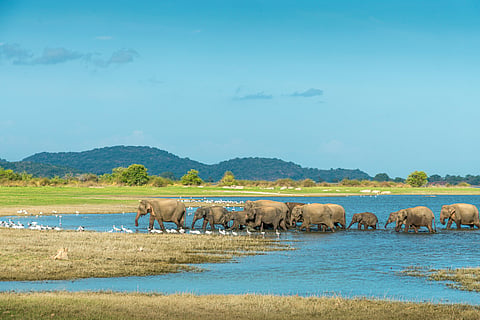

The United Nations Biodiversity Conference 2024 (COP16) being held in Cali, Colombia, is highlighting an important issue — the need to link biodiversity conservation with climate action in a meaningful way.
At a press meeting organised by Greenpeace International, experts highlighted the importance of maximising synergies or links between biodiversity and climate action.
For this, it would be important to protect ecosystems with high integrity and increase the funds available for this purpose.
Ecosystems, which are the natural communities of plants, animals and microbes, provide essential services, including the ability to store carbon dioxide. When such ecosystems are healthy and diverse, they can capture and hold significant amounts of carbon, playing a vital role in reducing the impacts of climate change.
These ‘high-integrity’ forests are found mostly in Canada, Russia, the Amazon, central Africa, and New Guinea; of the remaining high-integrity forests, only 27 per cent are currently in nationally designated protected areas.
However, the ongoing trends of deforestation and the promotion of fast-growing monoculture plantations, like Eucalyptus, threaten these vital ecosystems.
While monoculture plantations might provide some short-term carbon storage, they do not support the long-term ecological health and resilience offered by diverse forests.
In fact, diverse ecosystems not only store carbon but also improve water quality, reduce flooding, and offer better habitats for wildlife.
Cyril Kormos, executive director of Wild Heritage, highlighted that while biodiversity, health, land degradation, water quality, etc are all connected, discussions on these topics often miss the synergies between these areas.
One of the major issues discussed is the fragmented way policies are currently developed.
Often, climate action plans and biodiversity strategies are created separately, leading to ineffective measures that fail to address the interconnected challenges of climate change and biodiversity loss. For example, the destruction of natural habitats for renewable energy projects illustrates the negative impacts of climate change on biodiversity.
An Lambrecht, a Biodiversity Policy Expert at Greenpeace International, urged policymakers to bridge the gaps and work collaboratively, as the challenges posed by climate change and biodiversity loss are complementary.
This situation underscores the urgent need for coherent and integrated environmental policies that can effectively tackle these interrelated issues.
To address the complex challenges facing the planet, experts at COP16 stress the need for collaboration among countries.
Joining together to develop comprehensive plans that align biodiversity conservation with climate action is crucial. Nations are being urged to make firm commitments to halt deforestation by 2030 and to incorporate ecological integrity into their climate policy discussions.
Moreover, traditional ecological knowledge is gaining recognition as an invaluable resource in these discussions. Indigenous communities have developed sustainable land management practices over generations, often yielding effective results in conserving biodiversity. By integrating Indigenous knowledge into modern policy frameworks, conservation efforts can become more inclusive and effective.
Coreen Child-Yakawilas, executive director at the Awina'kole Foundation, called on the Canadian government to implement a Nature Ability Act and commit to the ‘30x30 initiative’, aiming to protect 30 per cent of Canada's land by 2030.
He also advocated for an approach that stops tree logging across all species and proposed that Indigenous methodologies be integrated into policy frameworks.
Additionally, attention is being drawn to the role of fungi within ecosystems and be added in plant and animal kingdom. These organisms, which include mushrooms and mycelium, play a pivotal role in nutrient cycling and maintaining healthy plant communities. Recognising the importance of fungi helps illustrate the interconnectedness of all life forms and highlights the need for a holistic approach to conservation.